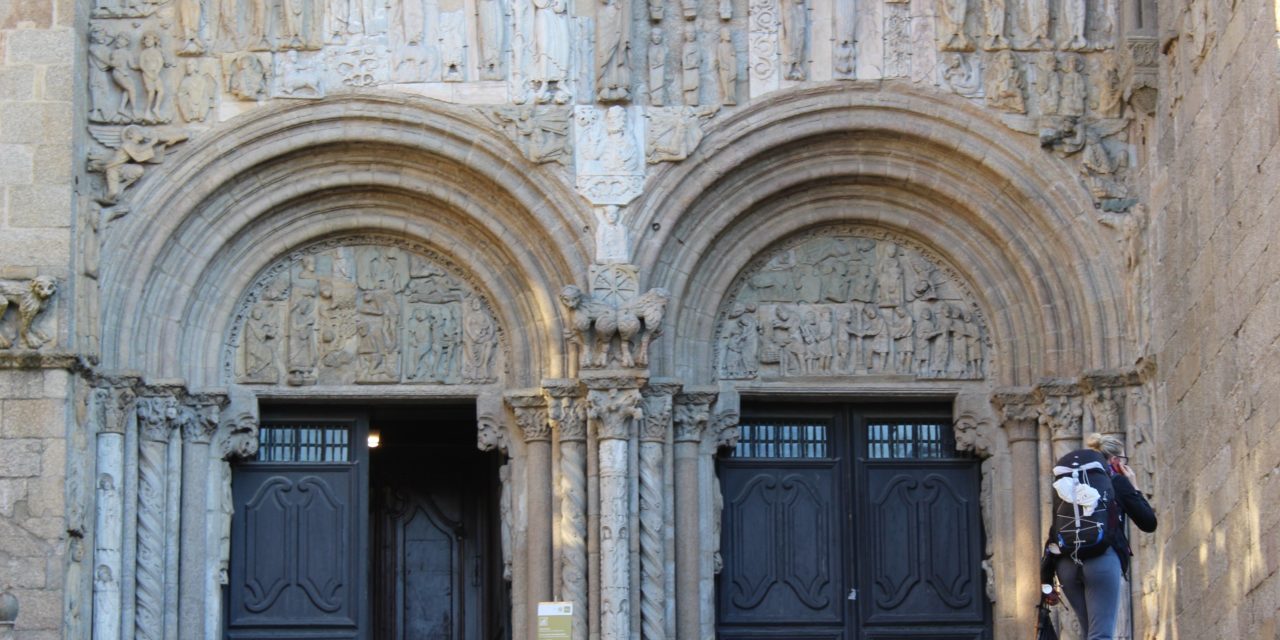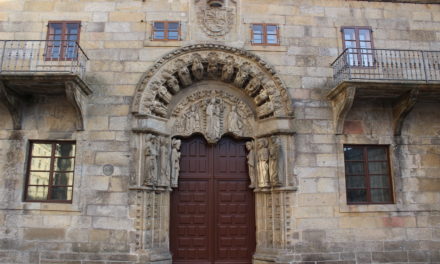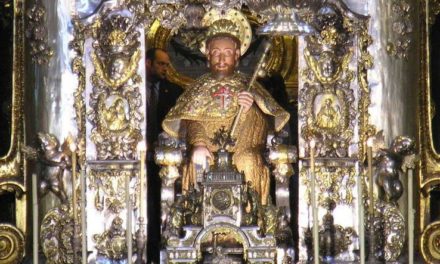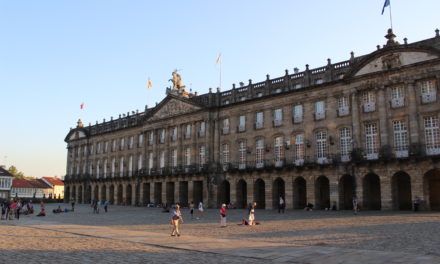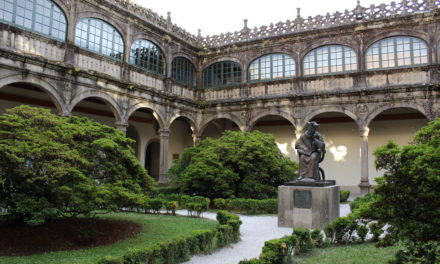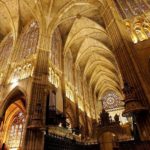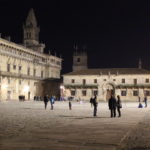In the days of its archbishops Diego Peláez (1070-1088) and Diego Gelmírez (1070? -1140), the Romanesque basilica of Santiago was conceived- and conceived as a whole, as a perfectly interlocking structure where nothing was left to chance. Its architecture and sculpted covers followed a very specific model: that of the great sanctuaries or basilicas of European pilgrimage. It was this concept and function that undoubtedly determined not only its height and ground plan, but also its decorative and iconographic programs.
To explain the existence of a such model we should also take into account the presence in Compostela of various masterbuilders and workshops that introduced stylistic influences of other cities in France or in Spain or Italy. Jaca could serve as one example in Spain. As for Italy,the Roman basilicas were visited by Archbishop Gelmírez and his retinue at the beginning from the 12th century.
The cover of Platerías connects the south arm of the cathedral with the exterior and takes its name -as well as the square that opens before it- from the existence, according to tradition, of silversmith shops or goldsmiths nearby. This cover had to blend in with the other medieval facades of the cathedral, particularly with the erstwhile north façade known as Puerta Francígena or del Paraíso.
Due to the successive renovations and changes that they underwent throughout its history, the decorations today seem like a puzzle, with figures and reliefs of different sizes and scales. The complex history of the cover would include the participation of at least four masters in its execution, as well as the fact of having received some pieces originally conceived for other locations, such as the aforementioned Francigena door.
The structure and most of the decorative elements of the cover of Platerías tend to date from between 1078 and 1103, dates in which it was conceived as a large double doorway-each having its doors with a decorated tympanum and three double arches or vaults- which is superimposed on a large decorated frieze.
The eardrums and the frieze are profusely decorated with figurative reliefs and sculptures of apostles, angels, various representations of sin (centaur, mermaid, man riding a rooster), the months of the year and the zodiacal signs. Among the figurative scenes can be recognized the themes of the Epiphany, the temptation of Christ and various scenes of the Passion, such as the trial by Pilate, the flogging, and the betrayal of Judas. The whole constitutes, therefore, a great iconographic program of Christological theme, presided over by the sculptures of Christ and James -probably part of a scene of the Transfiguration- that occupy the center of the upper frieze, superimposed on the great Crismón and couple of lions that they occupy the intersection of the archivolts.
Finally, there are other figures and reliefs of diverse origin arranged on the sides of the portico. Of particular value is the relief of King David and the scene of the Creation of Adam, which, like many of the elements of the tympanums and frieze, would have come from the missing Francigena Gate.

